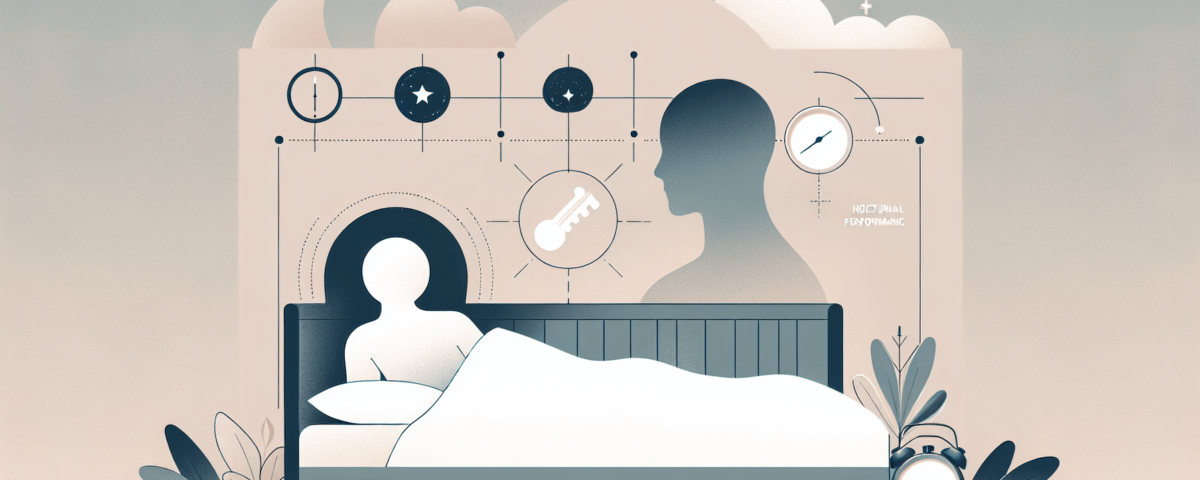The Intricacies of Stage 1: The Threshold of Sleep
Sleep, often perceived as a simple act of closing one’s eyes and drifting into oblivion, commences with a transitional phase known as Stage 1. This stage acts as a delicate segue from wakefulness to sleep. The onset of Stage 1 is typically marked by a notable reduction in muscle tone and a decreasing alertness of the environment, alongside a subtle dip in core body temperatures and a gradual slowing of the heart rate.
In this preliminary stage, the brain produces high amplitude theta waves that signal the non-committal boundary of early sleep. As the sleeper’s consciousness hovers between awareness and rest, there’s a heightened susceptibility to disturbances, which can send the individual back to square one. Thus, creating a conducive sleep environment is imperative.
The term ‘microsleeps,’ often used to describe fleeting moments of sleep that occur during this stage, showcases the brevity and volatility of the initial sleep entrance. It’s a stage that sets the tone for the night, reflecting the sleeper’s pre-bedtime activities—both physically and psychologically.
“The significance of Stage 1 is more about what it signals than what it accomplishes—it is the silent harbinger of deeper sleep to come.” – Sleep Scientist
Although this phase encompasses only about 5% of the sleep cycle, it plays a critical role, acting as the gateway to the more restorative stages that follow. The ease with which one transitions through this stage can often be an indicator of sleep quality and hygiene.
Embracing the Depth of Stage 2: The Foundation of Restorative Sleep
As the gateway to deeper sleep, Stage 2 is characterized by a more pronounced detachment from the surrounding environment, a further decrease in body temperature, and a slowing of the heart rate. In this intermediate stage, the sleep spindles—short bursts of rapid brain wave activity—indicate a strengthening of the sleep state. The occurrence of K-complexes, single high voltage spikes of brain activity, suggest a level of cognitive sophistication at play, in processing and even warding off external stimuli.
Clinical research points to the role of Stage 2 sleep in enhancing motor skill consolidation and in maintaining critical cognitive functions. With nearly half of the sleep cycle spent in this stage, it plays a pivotal role in daily renewal and is considered by experts as the true foundation of sleep’s restorative power.
- At this stage, sleeper’s remain disconnected from sensory input, fostering an uninterrupted healing process for the mind.
- Sleep spindles may assist with memory consolidation and neurological protection.
- Lasting between 10 to 25 minutes per cycle, it recurs throughout the night, accumulating to pyramidal longevity.
Strengthening the Stage 2 of sleep could mean enhancing your daily functionality. The optimization of this stage correlates significantly with improved problem-solving abilities and memory recall.
“Understanding and embracing the silent work that occurs during Stage 2 sleep is crucial for overall well-being” – Neuroscientist
The Rejuvenating Power of Stage 3: Entering Deep Sleep
Stage 3, commonly referred to as deep sleep or slow-wave sleep, is the most restorative phase of the sleep cycle. It is during this time that growth hormone peaks, facilitating cell repair and body growth. Heartbeat and respiratory rates drop to their lowest levels, and brain activity slows, producing the characteristic delta waves.
The human body dedicates this time primarily to physical restoration. It is a phase more about body than brain—immune function is bolstered, tissue repair is initiated, and energy reserves are replenished.
This deep slumber is critical for feeling refreshed the following day and for maintaining long-term health. Deficiencies in deep sleep have been linked to a myriad of health issues, including diminished immune function, weight gain, and reduced ability to learn new information.
- The heart finds solace in the slower rates, reducing the stress from the waking hours.
- Deep sleep comes in longer periods initially, often making it harder to awaken a sleeper during this stage.
The duration of Stage 3 sleep typically wanes with age, making it especially valuable to preserve through lifestyle choices and sleep hygiene.
Decoding Stage 4: The Mysteries of REM Sleep
REM sleep, the stage associated with vivid dreaming, is a juxtaposition of heightened brain activity within a paralyzed body. The stage sees a return to faster, beta-like brain waves, closely mirroring the state of wakefulness. It’s here that the brain is not just dreaming but also processing emotional experiences and consolidating memories.
REM’s role in supporting neural pathways associated with learning and memory make it a cornerstone for cognitive maintenance. Paradoxically, while the brain lights up with activity, the voluntary muscles of the body are temporarily immobilized, preventing one from acting out their dreams.
Statistical tracking of sleep patterns reveals that the average adult experiences around 90 to 120 minutes of REM sleep per night, advocating its non-negligible contribution to our sleep architecture.
“REM sleep acts as a nightly therapy session—it’s where the mind weathers the day’s emotional storms.”
As the sleep cycle progresses, the duration of REM stages increases, often dominating the latter half of the sleep period. These cycles of REM become progressively longer towards the morning, playing a critical role in ensuring mental sharpness for the upcoming day.
Engaging in comprehensive, synchronised cycles through these four stages is demonstrably necessary for optimizing sleep’s potential as a regenerative ally in our lives. By mastering the intricate dance between the phases of slumber, we unlock the profound potentials of rejuvenation, fortifying both body and mind against the demands of the waking world.




